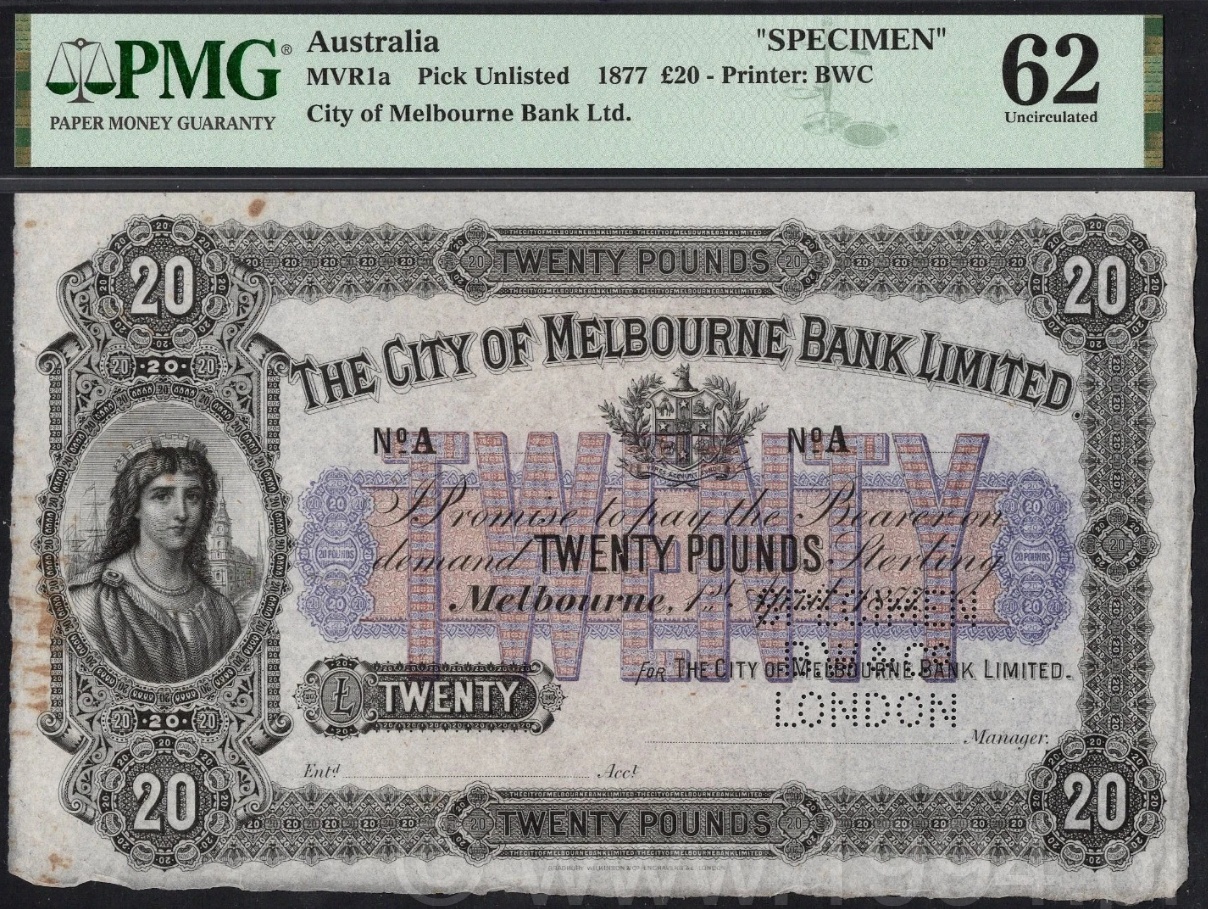Description and research notes
A rare high-denomination survivor from Victoria’s private banking era, this £20 specimen represents the City of Melbourne Bank Limited at its late-19th-century zenith. Produced from Bradbury, Wilkinson & Co. master plates, the note captures the visual language of confidence adopted by colonial issuers during Melbourne’s boom decades.
Design and engraving are quintessential Bradbury Wilkinson: a commanding central title cartouche in crisp intaglio, flanking allegorical work that balances commerce, navigation, and agriculture, and a robust lathe-work framework intended to deter contemporary forgers. The meticulous linework and micro-ornamentation are not mere embellishment; they are the anti-counterfeiting toolkit of the era, demonstrating London’s export-engraving standards that set the benchmark for Australian private issues.
As with most large-value private banknotes, issued £20 notes were heavily redeemed and later withdrawn under the Commonwealth’s post-1901 consolidation and the 1910 Australian Notes Act, leaving specimens as the principal documentary record. This example preserves the original plate detail and layout exactly as intended by the engraver, providing a clean reference for typography, guilloché geometry, and denomination treatments that are seldom seen intact on circulated survivors.
Educationally, the piece illustrates three pivotal transitions: from privately issued paper to a unified national currency; from purely local production to an international printer-client model centered on London; and from ornamental Victorian aesthetics toward the early-Commonwealth taste for standardization. As a high-denomination specimen, it anchors the narrative of Melbourne’s financial expansion and stands as a primary reference for scholars studying printer imprints, tint stone layering, and colonial anti-counterfeiting systems.
